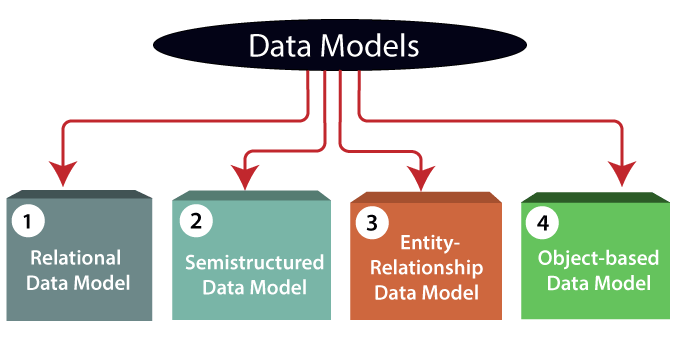Description
Introduction
Apache Cassandra is a highly scalable, distributed NoSQL database designed to handle massive amounts of data across many commodity servers without any single point of failure. It is widely used in scenarios where high availability and performance are critical, especially in big data environments. As organizations generate and store vast amounts of data, effectively managing and monitoring Cassandra clusters becomes essential for maintaining optimal performance, scalability, and reliability.
This advanced course focuses on the deep technical aspects of administering and monitoring Cassandra clusters. You will learn to design, optimize, and maintain Cassandra environments, ensuring high availability, minimal latency, and effective resource management. This course covers advanced monitoring techniques, troubleshooting common issues, and leveraging the right tools to manage Cassandra at scale.
Prerequisites
- Familiarity with the fundamentals of NoSQL databases, particularly Apache Cassandra.
- Basic understanding of Cassandra’s architecture and data model.
- Experience with database administration or distributed systems is recommended.
- Knowledge of command-line interfaces and basic system administration tasks.
Table of Contents
- Introduction to Advanced Cassandra Administration
1.1 Overview of Cassandra’s Architecture and Components
1.2 Key Concepts in Cassandra Cluster Management
1.3 Scalability and Fault Tolerance in Cassandra
1.4 The Role of Data Centers and Nodes in Cassandra
1.5 Review of Cassandra’s Consistency Models - Setting Up and Configuring Cassandra for Scalability
2.1 Installation and Cluster Setup
2.2 Understanding Cluster Topology and Configuration Options
2.3 Optimizing Cassandra for High Availability
2.4 Configuring Keyspaces, Tables, and Column Families for Performance
2.5 Effective Use of Cassandra’s Replication and Consistency Features - Data Modeling Best Practices in Cassandra
3.1 Introduction to Cassandra’s Data Model
3.2 Creating Efficient Schemas for Distributed Data
3.3 Data Modeling Strategies for Big Data Applications
3.4 Query Optimization and Indexing Techniques
3.5 Managing Large Datasets with Partitioning and Clustering Keys - Advanced Cassandra Monitoring Techniques
4.1 Setting Up Monitoring with JMX and Nodetool
4.2 Understanding Key Performance Metrics for Cassandra
4.3 Using Cassandra Query Language (CQL) for Monitoring Data
4.4 Integrating External Tools for Enhanced Monitoring
4.5 Real-Time Monitoring Dashboards and Alerts - Troubleshooting and Optimizing Cassandra Clusters
5.1 Identifying and Resolving Performance Bottlenecks
5.2 Handling Cluster Failures and Node Failures
5.3 Rebalancing Data and Repairing Clusters
5.4 Managing and Fixing Cassandra’s Data Consistency Issues
5.5 Optimizing Disk I/O and Network Latency for High Performance - Backup and Recovery in Cassandra
6.1 Understanding Cassandra’s Backup and Restore Mechanisms
6.2 Configuring Snapshot and Incremental Backups
6.3 Restoring Cassandra Data from Backups
6.4 Automating Backup Strategies for Large Clusters
6.5 Disaster Recovery: Best Practices for Minimizing Downtime - Advanced Security Features in Cassandra
7.1 Understanding Cassandra’s Security Architecture
7.2 Configuring Authentication and Authorization for Cassandra
7.3 Managing Encryption and Secure Connections
7.4 Integrating Cassandra with External Security Tools
7.5 Auditing and Monitoring Security Events in Cassandra - Cluster Maintenance and Upgrades
8.1 Routine Maintenance Tasks for Cassandra Administrators
8.2 Upgrading Cassandra Clusters without Downtime
8.3 Schema Management and Versioning
8.4 Handling Schema Changes and Migrations
8.5 Automating Maintenance Tasks for Large Deployments - Scaling Cassandra for Big Data Applications
9.1 Horizontal Scaling Strategies for Cassandra(Ref: Efficient Data Analysis with OpenRefine: From Cleaning to Discovery)
9.2 Load Balancing and Data Distribution Across Nodes
9.3 Handling Huge Data Volumes and Real-Time Processing
9.4 Integrating Cassandra with Other Big Data Technologies
9.5 Implementing Multi-Region and Global Cassandra Clusters - Best Practices for Cassandra Administration and Monitoring
10.1 Developing Standard Operating Procedures (SOPs) for Cassandra
10.2 Tools and Scripts for Efficient Cassandra Management
10.3 Monitoring Cassandra Performance at Scale
10.4 Optimizing Hardware and Software Configurations for Cassandra
10.5 Preventing and Managing Common Pitfalls in Cassandra Clusters - Case Study: Building a Scalable Big Data Solution with Cassandra
11.1 Business Problem and Requirements
11.2 Design and Architecture of the Cassandra Solution
11.3 Implementation and Data Modeling Techniques
11.4 Performance Tuning and Optimization Strategies
11.5 Results, Challenges, and Lessons Learned - Conclusion
12.1 Recap of Key Concepts in Cassandra Administration
12.2 Advanced Monitoring and Optimization Strategies for Production Environments
12.3 Keeping Up with the Latest Features and Updates in Cassandra
12.4 Future Trends in NoSQL Databases and Big Data Management
Conclusion
Mastering Apache Cassandra is crucial for organizations dealing with large-scale, high-volume data. In this course, you’ve learned the advanced techniques for monitoring, administrating, and scaling Cassandra clusters to ensure they are optimized for performance, reliability, and high availability. Whether you are managing a small Cassandra deployment or overseeing a global, multi-region data system, the skills gained in this course will empower you to handle the complexities of big data infrastructure with confidence.
As data continues to grow exponentially, Cassandra remains one of the most powerful tools for managing distributed databases. By applying best practices for administration, monitoring, and troubleshooting, you will be able to deliver scalable, high-performing data solutions that meet the demands of modern big data applications.











Reviews
There are no reviews yet.